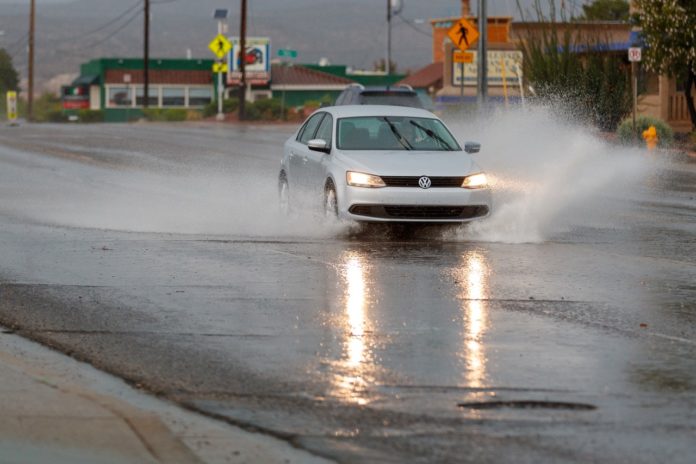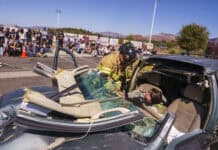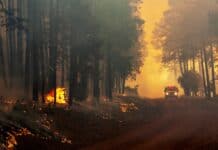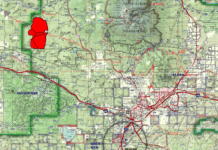
With the Coconino, Prescott and Kaibab National Forest restrictions lifted and fire season effectively dampened by monsoon storms that are hitting every afternoon, the next thing Sedona and Verde Valley residents need to prepare for is flash floods and flooding.
The 78,065-acre Rafael Fire burned significant swaths of forest on the Coconino Plateau and all along Sycamore Canyon.
The washes that feed into Sycamore Canyon flow into Sycamore Creek, then the Verde River, which passes through the whole length of Clarkdale, Cottonwood and Camp Verde then points beyond. There are also washes on the plateau that stream south into the area bordered by Casner Mountain, Black Mountain, Spring Creek, Loy Canyon and Bear Mountain before depositing into Oak Creek.
Normally when a major monsoon storm hits the dry desert, the high desert soil soaks up the moisture eagerly and readily with excess flowing downstream into dry washes and perennial waterways.
In that 78,000-acre scar on the land, the soil has been charred, making it harder for moisture to sink in.
Hydrophobic, or water-repellent, soils are formed when organic material such as trees, scrubs, undergrowth and litter burn at high intensity and high temperatures, causing water-repellent compounds to vaporize and then condense on cooler soil layers below the surface. They prevent the soil from absorbing water after a fire.
During heavy storms, rainfall cannot penetrate water-repellent soil layers. This means when a microburst or heavy area downpour hits that particular area, flash floods downstream are far more likely and more dangerous.
Residents along the Dry Creek Wash area west of Sedona already reported this week seeing pitch-black water in the wash as ash collected and ran downstream. Once the ash is gone, the hydrophobic soil is all that remains on the surface, meaning points downstream are now at greater risk of flash flooding.
If you live downstream and normally take flooding precautions or severe storm warnings with a grain of salt, be more prepared if you get a warning on your phone, computer or radio.
If you drive through low-water areas, be aware that flash floods hit suddenly, often without warning. While the rain may be light above you and might even be light everywhere upstream, that sheer volume of water could be devastating.
Two years after the 1,961-acre Museum Fire threatened parts of northern Flagstaff, the relatively small burn area still scars a canyon in the San Francisco Peaks. Earlier this month, a monsoon storm in the area created a torrent of water down residential streets in Flagstaff that swept away vehicles.
To avoid falling victim to a flash flood or flooding in general and to limit the damage you may contribute to, clean out dry washes on your property and remove debris that could be swept away.
Rebuild barriers, gutters, ditches and washes that might have filled in over the years to make sure these culverts can handle the heavy volume of rain that they were built for on your property.
When it does rain, avoid low-water areas, dry washes and riverbeds. Be careful passing through low-water crossings. If there is flowing water, find another route. It may look passable, but if your vehicle gets stuck for even a few minutes, a flash flood could strike in that time.
If you’re out hiking, get to higher ground. If you get stranded or see a person or vehicle stranded, call for help before the water begins to rise to a point when a safe rescue becomes too difficult.
Christopher Fox Graham
Managing Editor





















